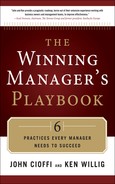Chickens and eggs, strategies and goals
You’ll notice that there is an arrow moving from the four information categories to strategies, and then from strategies to goals. Our view is that the information from the four categories determines the options available for creating viable strategies. Then, the strategies provide a picture of the “reasonable yet challenging” goals that you might attain.
This is in contrast to many people’s view that goals are set first, then strategies are created to meet them. Which is correct? And why does it matter?
Actually, goals sometimes are set with seemingly no, or little, regard to the strategic options or to the current realities of the environment. And sometimes those goals are met.
Most famously, perhaps, is President Kennedy’s promise, made in the early 1960’s, to land a man on the moon by the end of the decade. When Kennedy made that promise, the country lacked many of the capabilities that would be needed to accomplish this, and he made a lot of government scientists quite nervous. But the promise was fulfilled with a few months to spare in the summer of 1969. Bravo!
More commonly, and more realistically for business owners, goals are set only after there is some understanding of the environment. If this were not the case, why even go through any type of planning process to collect and analyze information? It would instead be logical to simply set goals, then “just figure out a way to reach them.”
We believe that even when companies profess to first set highly ambitious goals, and then devise strategies to reach them, that these goals are created with some basic knowledge of the strategies that will be effective in their marketplace. Some owners, however, might still say that’s simply not so, we simply set the goals and then challenge our team to find out a way to accomplish them. Goals come first.
Let’s look at a fictitious example to test this. Let’s assume that we start a new business, a lunch-only sandwich shop in an average mall location, and that we have no knowledge of the restaurant business or the business environment (that’s not as strange as it might sound).
We then contemplate what our revenue target and net profit goal should be for the coming year. Someone suggests that we could do $1 million in business and make 10 percent net profit. Then someone else, who has heard a talk by one of those Goals Come First folks, suggests that the business might just as well be ambitious and set a goal for $1 billion in business and 15 percent net profit. Maybe even $10 billion at 20 percent.
You can see that some knowledge is required to set meaningful goals. We surely wouldn’t expect this sandwich shop to do anything close to those ambitious figures.
Even Kennedy had the benefit of some previous successful rocket launches to provide some basis for his admittedly ambitious challenge to the nation’s scientists. Similarly, virtually all of us have some valuable information before we set goals. We might rely, for example, on last year’s figures, the recent demise of an arch competitor, or some important change in the opportunities available to us to provide us with some basic guidance for setting the goals.
